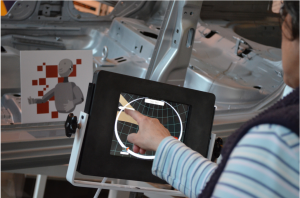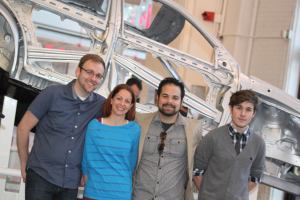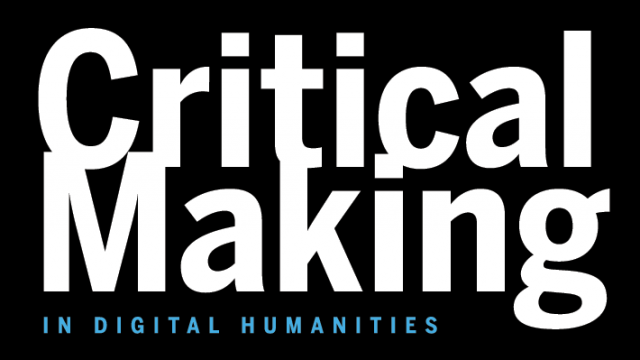Autovation
PIs: Students in the Creative Media & Digital Culture Program; Dr. Dene Grigar, Advisor.
Funding: Fellowship from Dick Hannah Dealerships, Vancouver, WA.
Awards: “Merit,” 2012 Rosey Award for “Experiential” category.
Site: http://dtc-wsuv.org/autovation/
Since the invention of the first automobile, advances in technology and human ingenuity have allowed the car to evolve into being safer and more efficient than before. In early 2012 the Oregon Museum of Science and Industry reached out to sponsor Dick Hannah Dealerships of Vancouver, WA and the Creative Media and Digital Culture program of Washington State University Vancouver to convey these advances over time using cutting edge technologies.

The students of the CMDC program worked on Autovation from January 2012 to June 2012. Autovation was officially unveiled to the public at OMSI on June 11th, 2012 and is currently on permanent display in Turbine Hall. The installation uses three iPads aimed at trigger images within the car frame which is angled several feet from the ground. When pointing the iPads at the trigger images in the frame, users can view drive train, safety and wheel 3D models included with animations. A description for each component is also given.

Using a Volkswagen Jetta unibody stripped to bare metal and three mounted iPads, visitors can view components of today’s vehicles through Augmented Reality. AR uses marker images, GPS, or sound to generate computer sensory effects. Autovation utilizes a series of marker images in locations where components of the vehicle would be located. The iPads track the marker images through the camera lens and the Metaio software recognizes the images and renders the desired marker. Below is a video describing in detail the use of AR in the installation.
